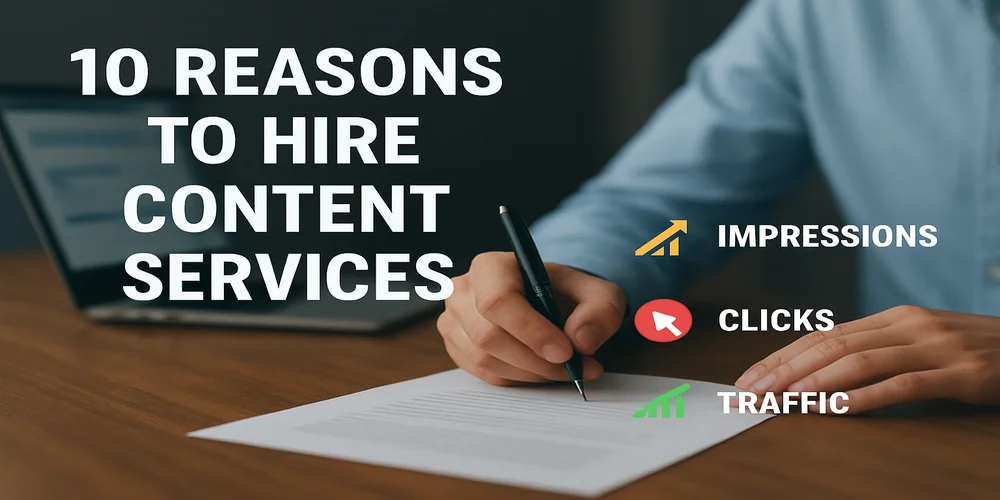What are the Different Types of Writing Styles

Ever noticed how some pieces of writing fell like a heartfelt conversation, while others read like a clear set of instructions? Some grab your emotions, some make you think, and others just give the facts, simple, clear, and straight to the point.
Each style has its own purpose. Some tell a story, and others explain how things work. Meanwhile, some try to convince you or help you see a different point of view.
If you’ve ever felt stuck trying to say something, the problem might not be what you’re saying, but how to say it. There might be chances that you were bumping up against the wrong style.
In this article, we’ll break down the different types of writing styles and help you choose the right one for your brand. But before we dive into the types, it is imperative to understand what a writing style is and why we have different types of writing styles. So, without further ado, let’s get into it.
What is a Writing Style?
Do you text your boss the same way you text your friend? You do it in a pretty different way, right? That’s because you’re using a different writing style.
A writing style is the way you express your message, shaped by word choice, structure, and purpose. It’s different from tone or voice, though they all work together.
Choosing the right style can help your writing land better, whether you're telling a story, sharing facts, or persuading someone.
Top 4 Traditional Types of Writing Styles
When it comes to writing, there’s no one-size-fits-all approach. Is it about explaining a process, painting a vivid picture, changing someone’s mind, or telling a powerful story? All these message types require a distinct style. The way you shape your words directly affects how your message is understood and felt.
Let’s break down the four classic types of writing styles and where they shine:
Expository Writing
Purpose: To explain or inform
Best For: How-to guides, textbooks, news articles, and research papers.
What It Sounds Like:
“Studies show that 65% of online learners prefer visual content.”
- Stick to facts, no personal opinions here.
- Use clear, direct language to break down complex topics
- Think of it as the “just the facts” style.
Descriptive Writing
Purpose: To create vivid imagery and stir emotions.
Best For: Novel, poetry, travel blogs, memoirs.
What It Sounds Like:
“The sky burned orange as the sun slipped behind the hills.”
- Appeals to the five senses.
- Uses metaphors, similes, and emotion-rich language.
- It’s all about showing, not telling.
Persuasive Writing
Purpose: To convince the reader to agree with your point.
Best For: Ads, opinion pieces, cover letters.
What It Sounds Like:
“If you want better health, start with leafy greens today.”
- Uses logic and emotion.
- Makes strong claims with facts or personal stories.
- Always has a call to action.
Narrative Writing
Purpose: To tell a story
Best For: Novels, short stories, biographies, and case studies.
What It Sounds Like:
“She opened the letter and her hands began to shake.”
- Has characters, a plot, and a setting.
- Can be fiction or nonfiction.
- A great way to connect with readers through emotion.
Pro Tip: Skilled writers often mix styles, like using storytelling in a persuasive essay or adding facts in a descriptive piece. Let your purpose guide you.
Modern & Professional Writing Styles You Need to Know
Writing today goes beyond essays and novels. In today's digital world, different kinds of writing serve other goals. From product manuals to marketing emails, the style you use should match your purpose, audience, and industry.
Let’s break down 8 modern writing styles that professionals use today and where and how each is used:
Technical Writing
It is a clear, step-by-step writing that helps people use a product or understand a system.
Where it's used: Manuals, instruction guides, FAQs, software documentation.
Why it matters: Great technical writing makes complex stuff easy to follow.
SEO & Content Writing
It is informative and helpful content written to rank on search engines and gives readers the answers they’re searching for.
Where it’s used: Blog posts, articles, landing pages.
Why it matters: Help websites attract the right audience and show up on Google.
Copywriting:
Uses persuasive, action-driven language to sell, promote, or inspire immediate action in readers.
This is the writing designed to sell, persuade, or get action.
When it’s used: Ads, website, social media, emails, product pages.
Why it matters: It’s the backbone of marketing, and great copy makes people act.
UX/UI Writing (Microcopy)
Short, helpful text that guides users and improves their experience while using apps or websites.
Where it’s used: Buttons, error messages, sign-up forms.
Why it matters: The right words make digital experiences feel smooth and human.
Resume & Cover Letter Writing
Professional writing that presents your strengths, experience, and value clearly and helps you make a strong impression.
Where it’s used: Job applications, LinkedIn summaries.
Why it matters: Tailored, results-focused writing helps you stand out.
Business Writing
Communicate clearly and professionally to keep teams informed, aligned, and productive in the workplace.
Where it’s used: Reports, memos, internal emails, business proposals.
Why it matters: Helps teams collaborate and make informed decisions.
Academic Writing
Presents research, analysis, and ideas using formal structure and evidence to support arguments and contribute to knowledge.
Where it’s used: Essays, dissertations, scholarly articles.
Why it matters: Builds credibility and supports logical arguments.
AI-Augmented Writing
Combines AI tools with human input to create drafts, spark ideas, and improve writing efficiency and quality.
Where it’s used: Blog, scripts, brainstorming drafts, and email templates.
Why it matters: Boost productivity, but still needs a human touch.
How to Choose the Right Writing Style
Choosing the right types of writing styles is all about knowing your purpose and audience. Ask yourself:
- Who are you writing for? (Teens, professionals, general readers?)
- What’s your goal? (To teach, to sell, to inspire?)
- Where will it appear? (A blog, social media, a report?)
Once you have clarity, the style follows naturally. For instance, if you’re writing a LinkedIn post, you should use a persuasive tone with a touch of professionalism. Or if you’re creating a how-to guide, go for expository + technical for clarity. You must choose your tone wisely, as it shapes how your message is received.
Tools to Improve Your Writing Style
As much as good writing takes talent, it also takes the right tools to shape that talent into something impactful. Whether you’re refining tone or sharpening clarity, here’s what can help.
- Hemingway App: Simplify your sentences
- Grammarly: Polish grammar and tone
- ChatGPT: Get structured suggestions
- Surfer or Yoast: Boost your SEO game
Want more? If you’re looking for experts who know how to use these tools and elevate your writing, talk to Pronto Writers. We bring strategy, clarity, and impact, so your message doesn’t just get written, it gets results.
Final Thoughts:
Writing isn’t just about putting words on a page, but about how those words land. Understanding different types of writing styles helps you say what you mean, clearly and confidently. Don’t be afraid to experiment and find your voice. The more you practice, the sharper your style becomes.
Want to grow as a writer? Get help from Pronto Writers.
Tags:

Subscribe Now & Get Exclusive Industry Insights!
By clicking submit button, you agree to our privacy Policy

